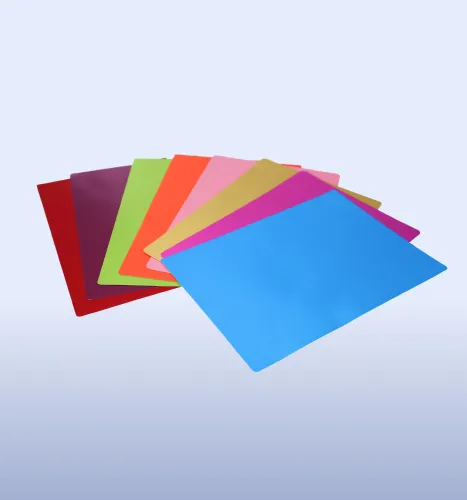2025-08-07 09:53:47
The coating process of aluminum sheet, also known as coil coating, is a multi-step, continuous process that is highly automated to ensure a uniform and durable finish. The primary goal is to apply a protective and/or decorative layer to the aluminum, enhancing its corrosion resistance, durability, and aesthetic appeal.

While the specific steps and technologies may vary between manufacturers and coating types (e.g., powder coating, PVDF, etc.), the general process typically includes the following stages:
This is a crucial step that ensures the coating will adhere properly to the aluminum surface. It involves:
Cleaning: The aluminum coil is thoroughly cleaned to remove any contaminants like oil, grease, or dirt. This is often done using alkaline cleaners and rinses.
Chemical Treatment: A chemical conversion coating is applied to the aluminum surface. This creates a thin, protective film that improves the adhesion of the paint and provides an additional layer of corrosion resistance. This is often a chrome-free or zirconium-based treatment.
Once the aluminum is properly prepared, the coating is applied. Common methods include:
Roll Coating: This is a widely used method for coil coating. The paint is applied using rollers, which ensures a precise and uniform thickness. This method can apply multiple layers, such as a primer, topcoat, and even a clear coat.
Powder Coating: In this process, a dry powder is electrostatically applied to the aluminum. The charged powder particles are attracted to the grounded aluminum surface, forming a strong bond.
After the coating is applied, the aluminum is passed through a high-temperature oven.
For liquid coatings (like PVDF): The heat cures the paint, causing the solvents to evaporate and the resin to melt and form a hard, durable film.
For powder coatings: The heat melts the powder particles, which then flow together and cure to form a smooth, protective layer.

After curing, the coated aluminum is allowed to cool down. This solidifies the coating and prepares the product for further handling.
The finished product undergoes rigorous inspection to ensure it meets quality standards. This can include checking the coating thickness, color, gloss, and adhesion. The aluminum plate is then cut to the desired size and packaged for shipment.
It's important to note that a high-quality coated aluminum plate often involves multiple coating layers, such as a primer, a topcoat, and a back coat to provide optimal performance and longevity.